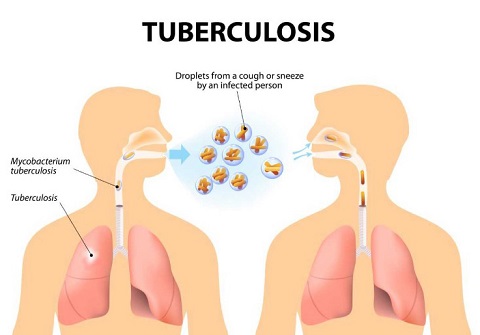U.S. Medical News: New Health Crisis In California - Rising Tuberculosis Infections!
Nikhil Prasad Fact checked by:Thailand Medical News Team Mar 16, 2024 1 year, 4 weeks, 2 days, 15 hours, 48 minutes ago
U.S. Medical News: California, known for its vibrant culture and diverse population, is currently grappling with a concerning resurgence of tuberculosis (TB) infections. This resurgence has raised alarm bells among public health officials, healthcare providers, and policymakers, highlighting the urgent need for targeted interventions and comprehensive strategies to curb the spread of this infectious disease. In this
U.S. Medical News report, we delve into the factors contributing to the TB resurgence in California, its impact on public health, and potential solutions to address this growing crisis.
 U.S.-Medical-News-New-Health-Crisis-In-California-Rising-Tuberculosis-Infections
Understanding the Scope of the Problem
U.S.-Medical-News-New-Health-Crisis-In-California-Rising-Tuberculosis-Infections
Understanding the Scope of the Problem
In 2023, California reported a staggering 2,113 TB infections, representing a 15 percent increase from the previous year. This surge marked a return to pre-pandemic levels and signaled the largest year-over-year jump in recent years, according to data from the California Department of Public Health.
https://www.cdph.ca.gov/Programs/OPA/Pages/CAHAN/Substantial-Increase-in-Tuberculosis-in-California-Recommendations-for-California-Healthcare-Providers.aspx
Equally concerning is the rise in the death rate among TB patients, with 13 percent succumbing to the illness in 2020 compared to 8.4 percent in 2010.
The trajectory of TB infections in California has been troubling, with cases steadily rising each year since 2020. This upward trend is particularly alarming given California's significantly higher TB burden compared to the national average, reporting 5.4 cases per 100,000 people, more than double the national rate of 2.5 cases per 100,000, as per data from the U.S. Centers for Disease Control and Prevention (CDC).
Preliminary data for the first two months of 2024 estimates that there were roughly 391 reported cases of TB so far.
It should be noted that certain other states in America are also witnessing a rise in Tuberculosis infections though not as high as California.
Identifying High-Risk Groups
One of the key factors contributing to the TB resurgence in California is the vulnerability of certain high-risk groups. Individuals born outside the United States account for more than 80 percent of TB cases in the state, with the TB rate among this population group being 13 times higher than among American-born individuals. This demographic trend underscores the importance of targeted interventions and screening measures for immigrant populations coming from regions with high TB prevalence.
Additionally, immunocompromised individuals, those living in communal settings such as prisons or shelters, and people experiencing homelessness are also at greater risk of contracting TB. These vulnerable populations require tailored healthcare interventions, access to
testing and treatment, and ongoing support to prevent TB transmission and improve health outcomes.
Challenges in Detection and Diagnosis
One of the challenges in combating TB is the variability and sometimes absence of symptoms in infected individuals. While some TB patients experience classic symptoms such as persistent coughing, weight loss, fever, and night sweats, others may present with atypical or no symptoms at all. This variability makes early detection and diagnosis crucial but often challenging, leading to delays in initiating treatment and potentially contributing to TB transmission.
Healthcare providers play a pivotal role in identifying and testing individuals at risk for TB, including those with a history of travel to TB-endemic regions, close contacts of TB patients, and individuals with weakened immune systems. Improved awareness, training, and diagnostic tools can enhance the capacity of healthcare systems to detect and manage TB effectively.
Addressing Immigration and Screening Protocols
The issue of immigration, particularly illegal immigration, has been a topic of debate concerning the TB resurgence in California. While some argue for stricter immigration controls and enhanced screening protocols to mitigate health risks, others emphasize the importance of comprehensive and equitable healthcare access for all populations, regardless of immigration status.
Dr Houman David Hemmati, an ophthalmologist, has raised concerns about gaps in immigration screening processes that may contribute to the spread of TB.
https://twitter.com/houmanhemmati/status/1767983191560958105
He underscores the need for thorough medical examinations, including TB testing, as part of the immigration process to prevent the introduction and transmission of infectious diseases like TB.
Public Health Strategies and Interventions
Addressing the TB resurgence in California requires a multifaceted approach that encompasses public health strategies, healthcare system strengthening, community engagement, and policy interventions. Some key strategies and interventions include:
-Enhanced Screening Protocols: Implementing robust screening protocols for TB among high-risk populations, including immigrants from TB-endemic regions, individuals with weakened immune systems, and those in congregate settings.
Healthcare Access: Ensuring equitable access to healthcare services, including TB testing, diagnosis, treatment, and follow-up care for vulnerable populations.
Public Awareness Campaigns: Launching targeted public awareness campaigns to educate communities about TB, its symptoms, transmission, and prevention measures.
-Collaborative Efforts: Fostering collaborations between healthcare providers, public health agencies, community organizations, and policymakers to coordinate TB control efforts, share best practices, and advocate for resources and support.
Research and Innovation: Investing in research and innovation to develop new diagnostic tools, treatments, and vaccines for TB, as well as studying social determinants of health that contribute to TB transmission and disparities.
Conclusion
The resurgence of tuberculosis in California underscores the ongoing challenges in combating infectious diseases and the critical importance of proactive public health interventions. By addressing the underlying factors contributing to TB transmission, implementing targeted screening and treatment protocols, and fostering collaborations across sectors, California can mitigate the impact of TB on public health and work towards achieving a TB-free future for all residents.
For the latest
U.S. Medical News, keep on logging to Thailand Medical News.
